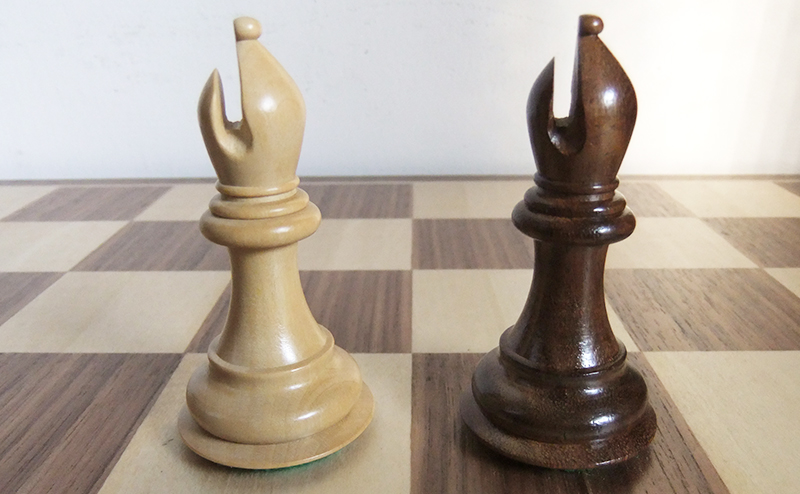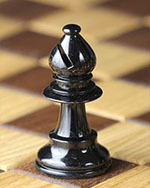

Bishops start off in the 3rd and 6th square and can move diagonal as long as they don't move through any other pieces. Because they move diagonally, they remain the all the time on the same color and can only access half of the squares.
The bishop is often one of the first pieces to be developed after the knights because he is less valuable than a rook or a queen and because of its location toward the center of the board.
Bishops may be also valuable in the endgame when they are less hindered by pawns.
Good and Bad Bishops
The value of the bishop is often depended on their relationship with the pawns.
If most of your own pawns are on the same color squares as one of your bishops, then that bishop is considered a "bad" bishop because your pawns block the bishop.
Similar when a bishop don't share most of the pawns he is called a "good" bishop.
Good bishops have more freedom and are more advantageous to attack, while bad bishops can be used to defend.
It's also more useful when a bishop shares the color of most of your opponent's pawns.
A pair of Bishops have full coverage
Due to their long distance abilities, they are strong attacking pieces (like rooks). They do not have to be close to the piece they are attacking, which allows them to protect easly other pieces.
Only two bishops have access to the entire board. Then they work best with each covering the vulnerabilities of the other pieces.
But when one of your bishops is removed from play, the other will become weaker, particularly in the endgame. The opposing side is likely to stick as many of their pieces (pawns) on the opposite color as possible.
Sacrifice Bishops
Bishops are often underestimated by beginning players, because they take skill and practice to use effectively, but even beginning players need to get in the habit of not throwing them away.
It is important to note that a king and bishop cannot force checkmate against a lone king. So while a bishop is an important piece, do not save him over other pieces for a final position on the board.
Continue Reading


